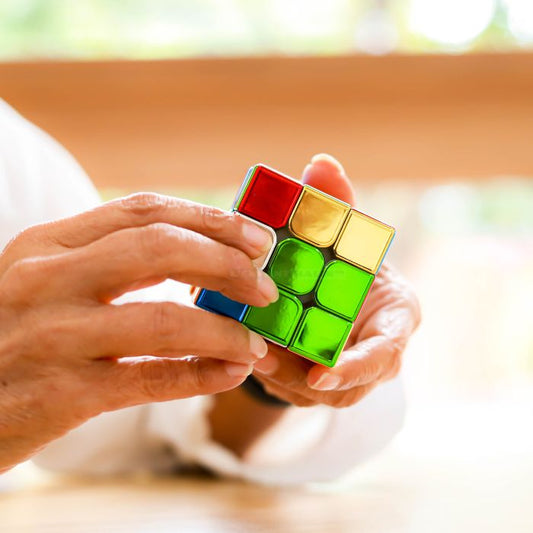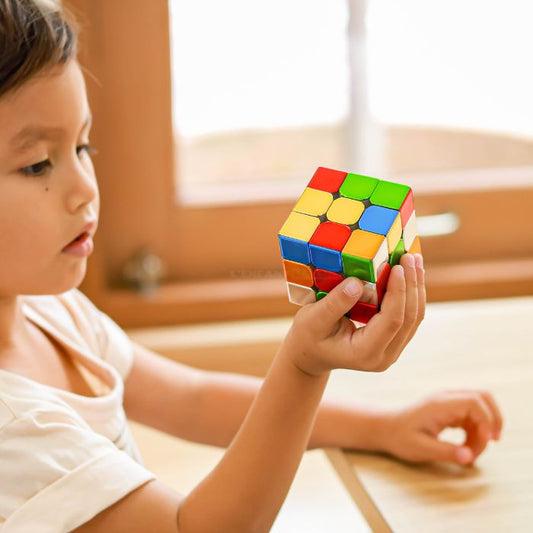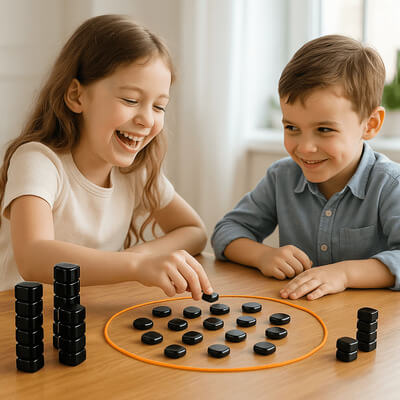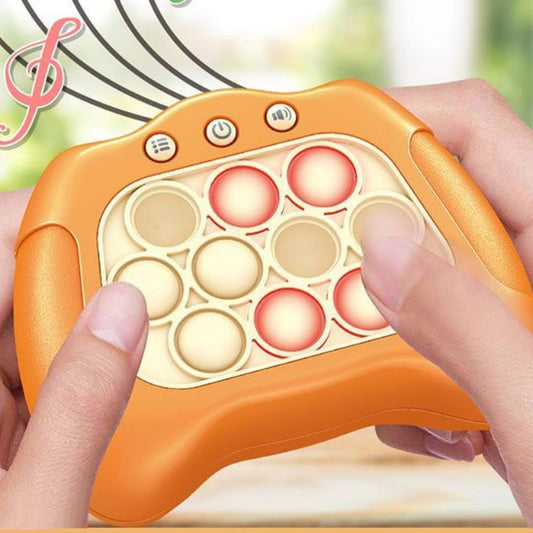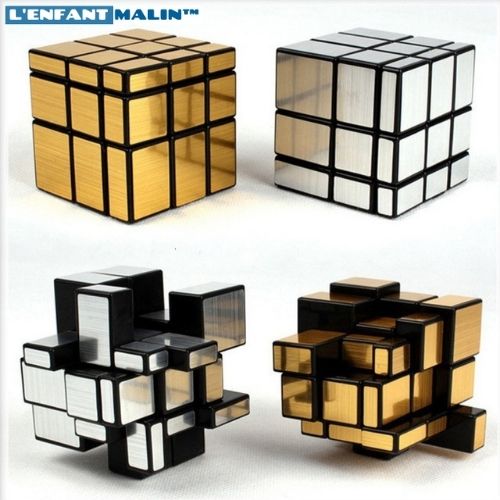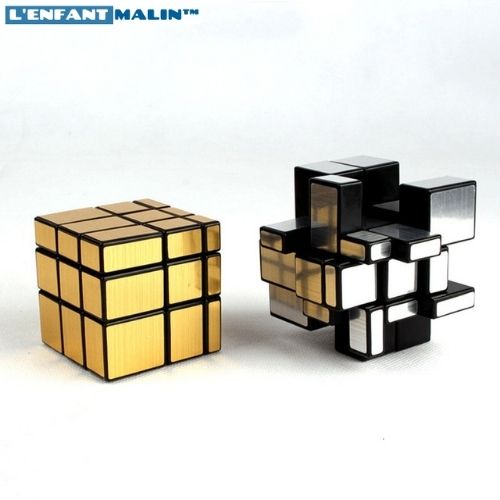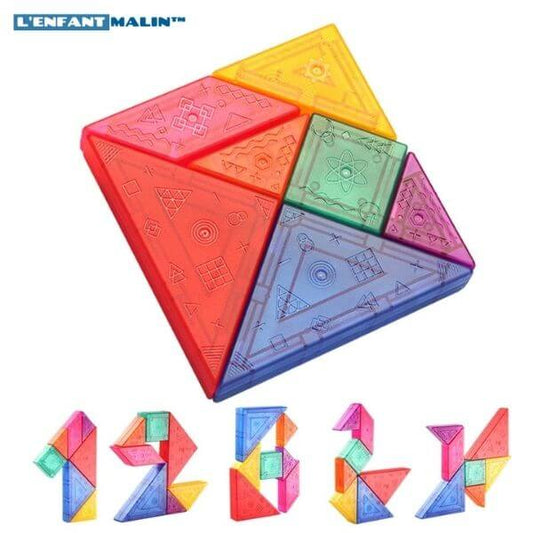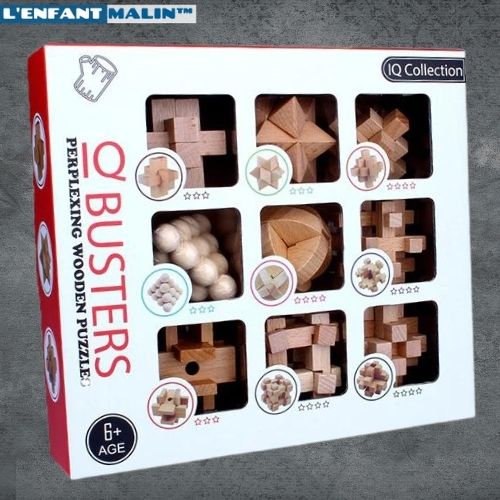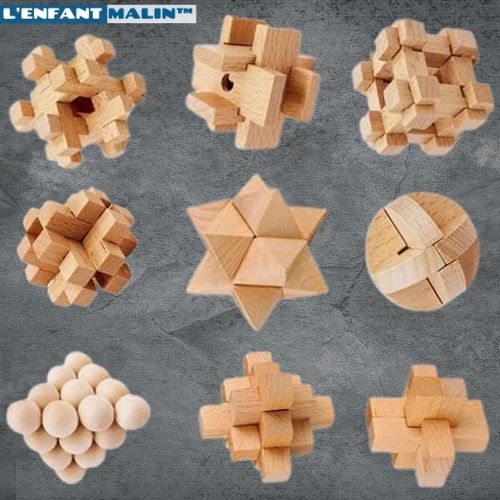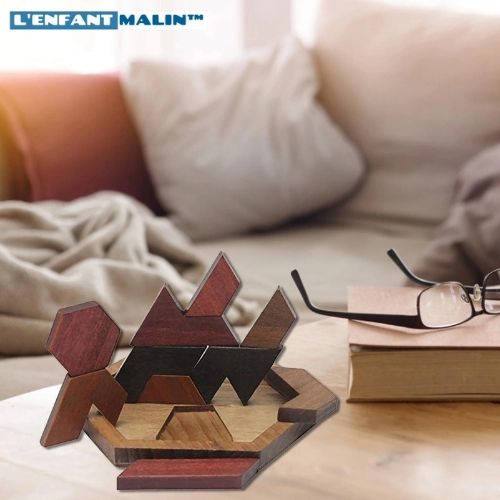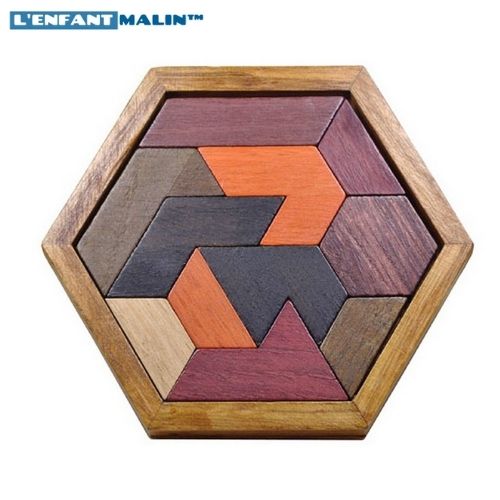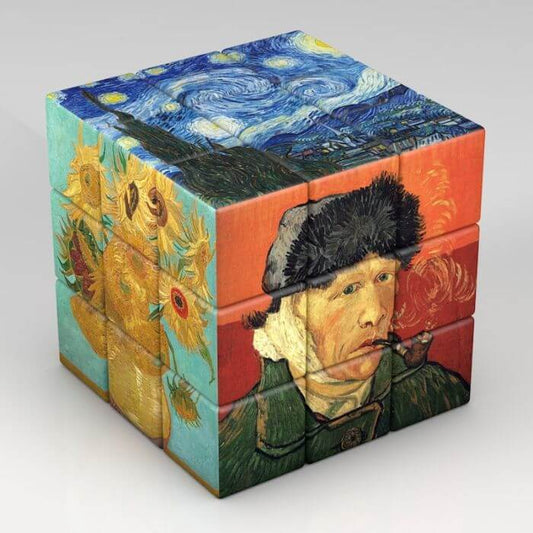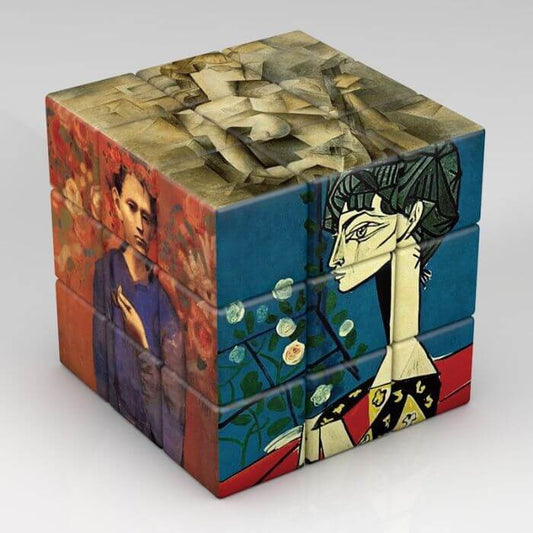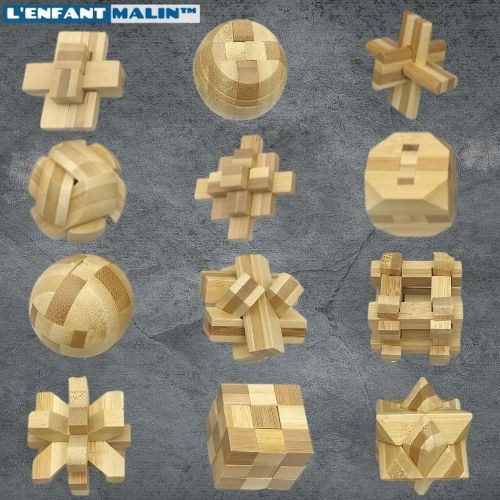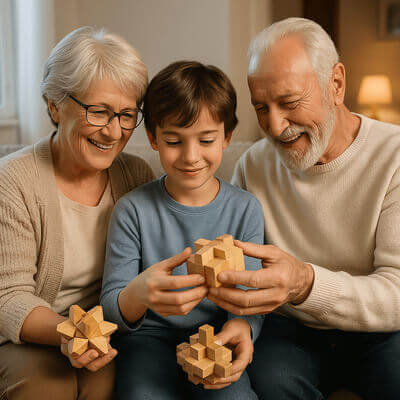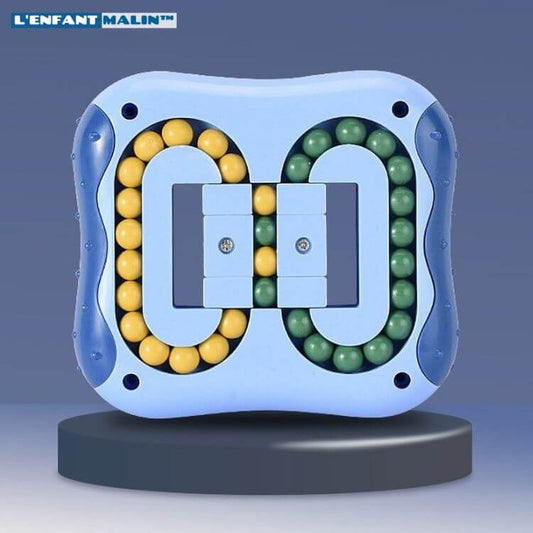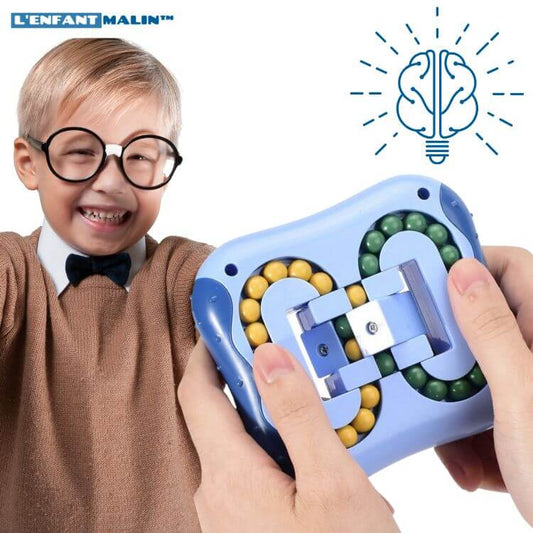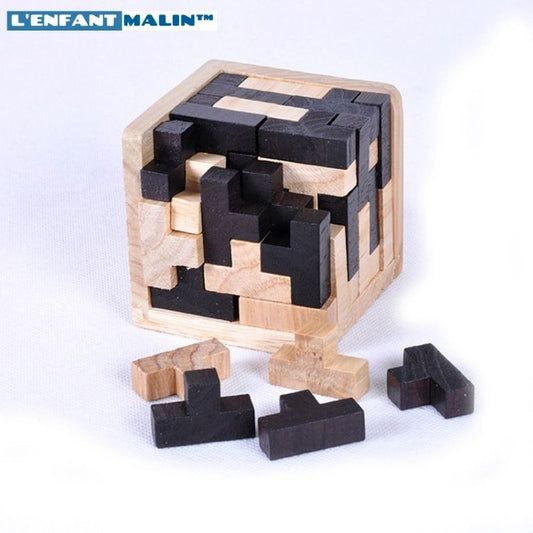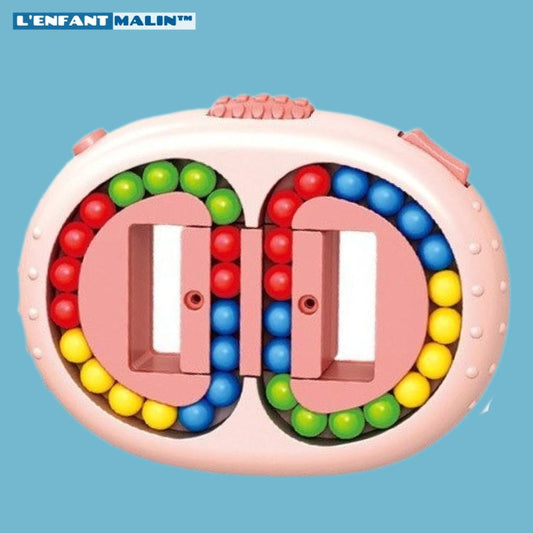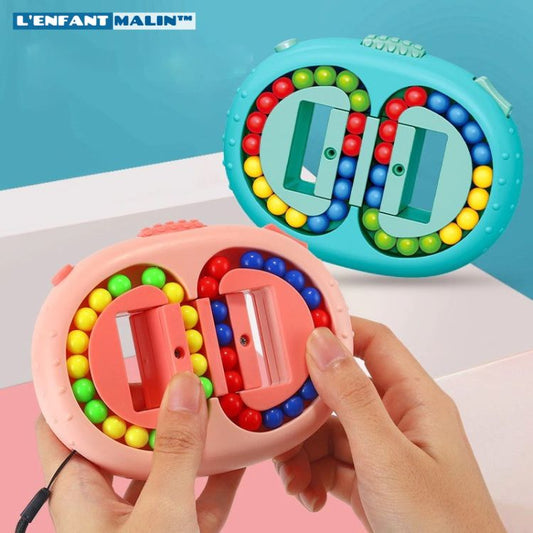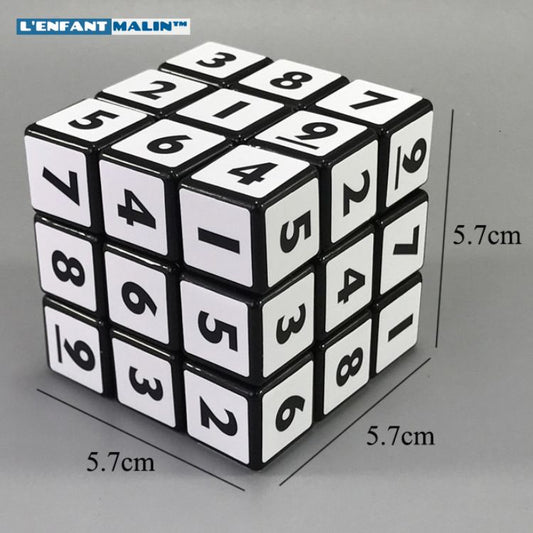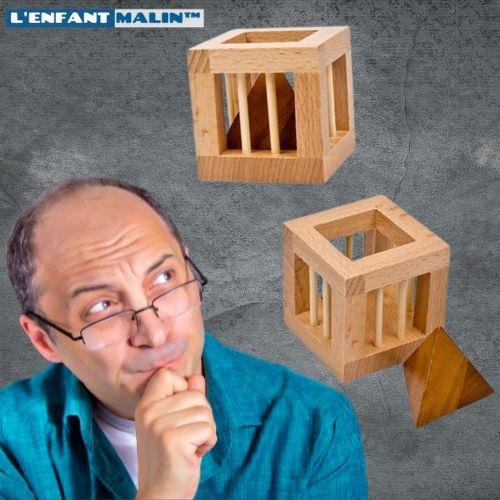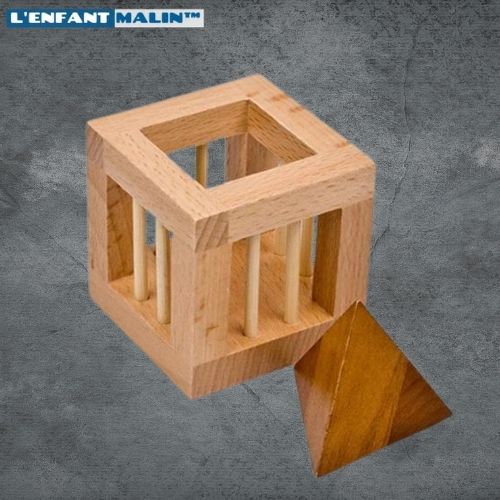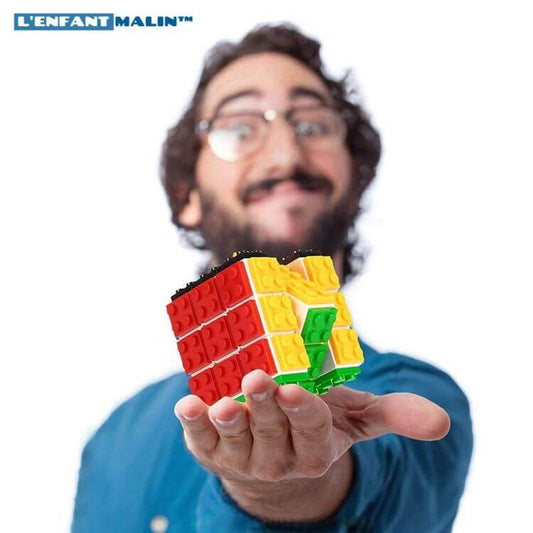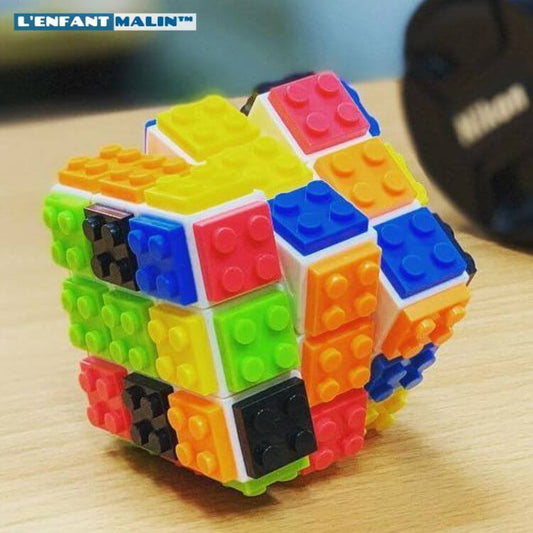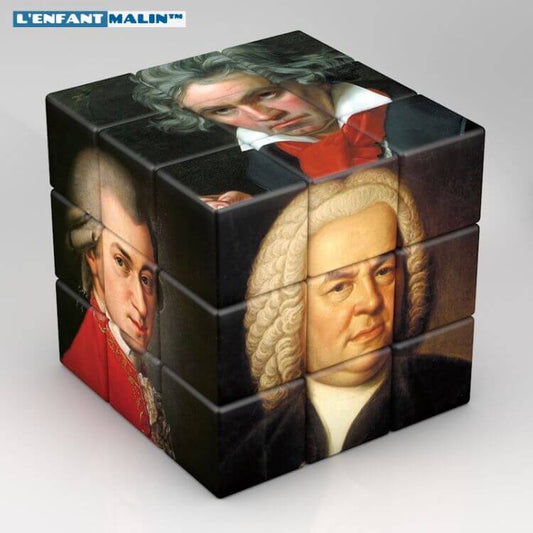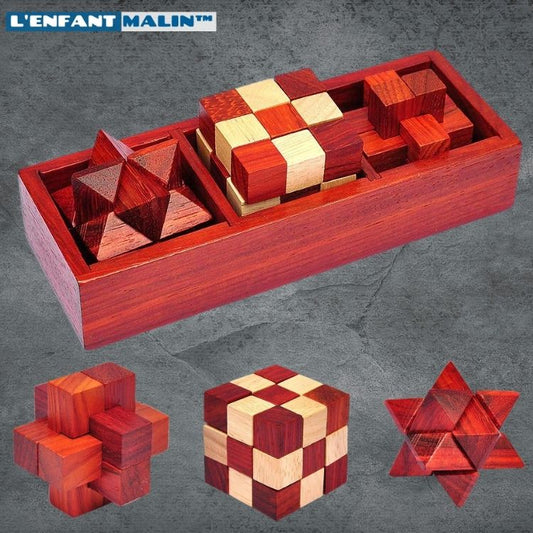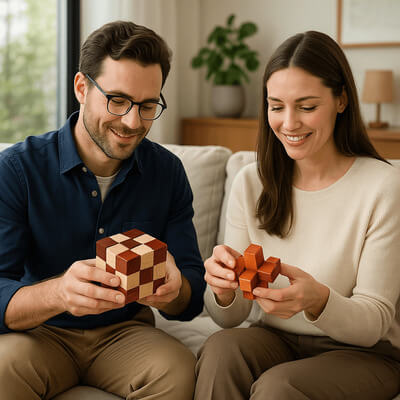ARE YOU LOOKING FOR A FUN WAY TO STIMULATE YOUR CHILD’S BRAIN AND MEMORY? OR EVEN YOURS?
For you, the word puzzle may be reduced to the famous colored rubik that all children have, or to riddles. These are indeed puzzles of which the Rubik is the standard bearer but the universe is much wider than that.
Doing a puzzle or trying brain games regularly is helpful. Challenge yourself alone, with others or with your children.They are not only fun for children, they also help good mental brain health of adults. There are all kinds of puzzles in the shape of cubes, puzzles, wooden or even metal boxes. If you've never tried puzzles with your kids, here are some benefits of doing so.
STIMULATE MEMORY
Playing brain games (or smartgames) helps strengthen connections between brain cells. Brain games force participants to remember patterns and shapes, which stimulates memory and thinking. The puzzle that challenges you can increase cognitive functions. The Casse-Tête collection from L'ENFANT MALIN brings together the best brain stimulators on the market for little ones (from 3 years) as for older children.
Puzzle games stimulate memory in several ways:
- require sustained attention and concentration to solve problems and find solutions. This trains the mind to focus on specific tasks, which strengthens working memory.
- puzzle games may require memorization of patterns, diagrams or specific rules, which improves visual memory and spatial memory.
- by regularly engaging in puzzle games, individuals can strengthen their ability to retain information, make associations and recall sequences, which has a positive impact on their overall memory.
DEVELOP PROBLEM-SOLVING SKILLS
Life requires good problem-solving skills, and brain games can help your children develop them. A puzzle or riddle challenges the brain to find new solutions to problems, which strengthens critical thinking. Puzzles are the ultimate educational games to assemble, allowing the child to play alone if they want, as well as with another player.
WORK BOTH SIDES OF THE BRAIN!
The human brain has two different sides, and they are largely responsible for different things. For example, studies show that the right side of the brain is generally more involved in emotions. The left side of the brain tends to be more active in vision-based languages and speech production.But when you do puzzles or smart games, it works both sides of your brain at the same time.
Simply stimulating brain activity through mental exercises, logic games and puzzles has great benefits. It's easy to find puzzle games or fun games to play alone or with friends, don't hesitate to discover our board games collection.
THE UNIVERSE OF PUZZLES
The family of puzzles is large. It can be divided according to the material (bamboo, metal, cardboard), the number of pieces (from 3 to dozens of pieces), the form (assembly, puzzle, box, padlock, string, rubik) and the difficulty.
-Chinese adult wooden puzzles - Comprising from 3 to 10, 15 or even 20 pieces, these wooden puzzles appear in the shape of a cube, star, cross , sphere or even ball. Some can be extremely difficult and you will need to be very patient to solve them! Most are made of bamboo or oak wood. Undoing is sometimes difficult, assembling will be even more difficult and you will need to be patient! (Medium levelto extreme)
-Puzzles - Often in the form of wooden tangrams, including the famous Montessori tangrams for children, are considered real puzzles! 1,2,3 assemble! (Easy level to medium)
- The Japanese secret box - Many versions of Japanese secret or magic boxes exist, each more mysterious than the other. Logic and cunning are required! (Medium levelto extreme)
- Metal padlocks - Increasingly popular, especially among new generations, these metal puzzles are more solid but just as difficult to solve! (Medium to extreme level)
- The Rubik - Bearing the name of the famous brand, the Rubik is now available in ten shapes with different difficulties and materials. Patience is essential! (Easy level to medium)
- The maze - One of the favorites of the youngest because the maze, especially with a ball, is more "interactive" for children. But be careful, the difficulty can sometimes be very great! (Medium to difficult level)
- The bottle puzzle - Being part of the first category, it is however so popular and so unique that we decided to end with it. For all fans of wine and beautiful bottles, this bottle puzzle brings a little touch of fantasy to the tasting of your favorite bottle! (Middle level)
In summary, puzzles can be cubes, puzzles, mazes made of wood, metal and in the form of a box or box they remain games of logic and thinking par excellence. Knowing how to assemble each piece to make a compact object is the goal! But remember, patience is your greatest friend!

